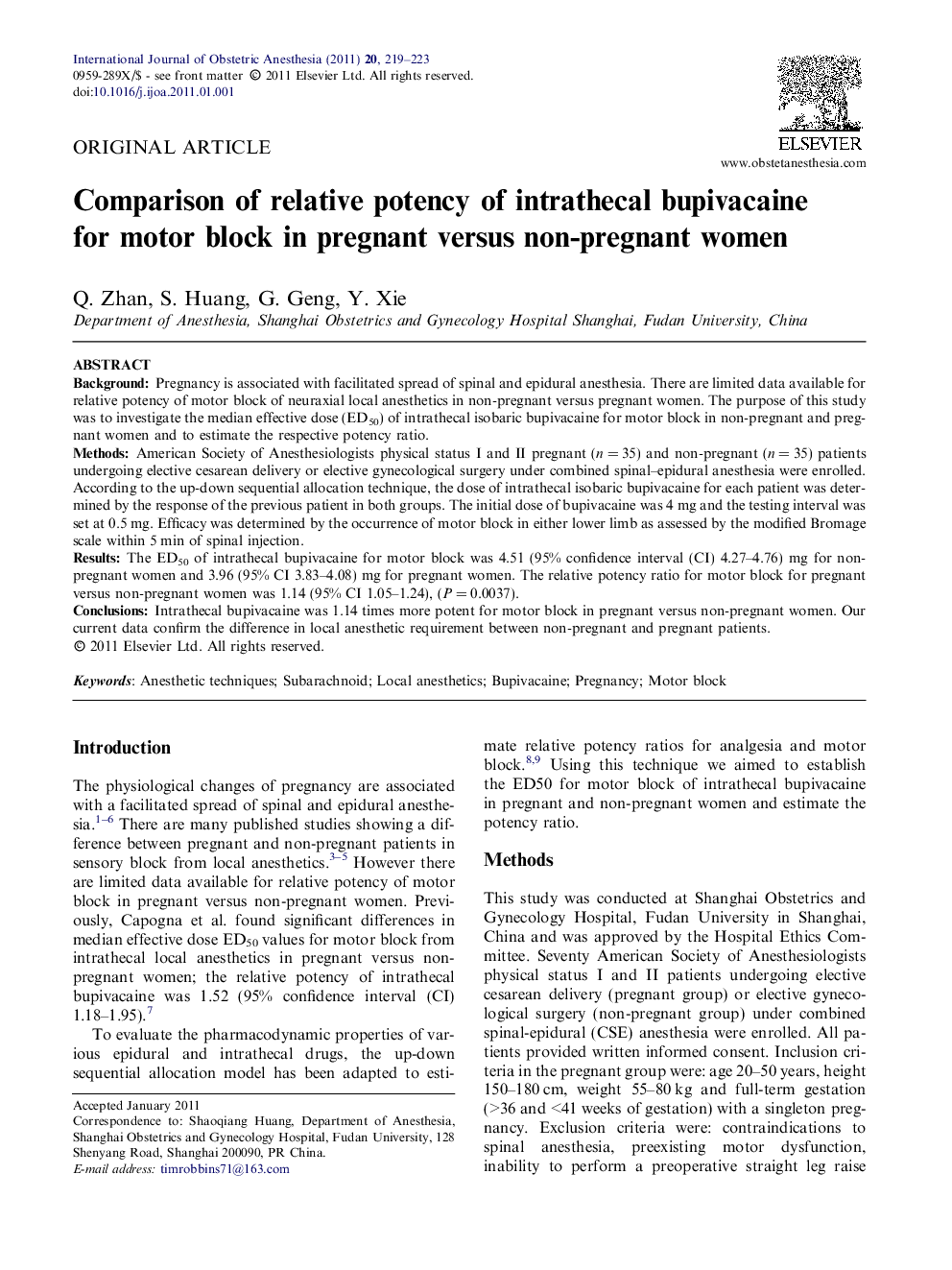| Article ID | Journal | Published Year | Pages | File Type |
|---|---|---|---|---|
| 2757921 | International Journal of Obstetric Anesthesia | 2011 | 5 Pages |
BackgroundPregnancy is associated with facilitated spread of spinal and epidural anesthesia. There are limited data available for relative potency of motor block of neuraxial local anesthetics in non-pregnant versus pregnant women. The purpose of this study was to investigate the median effective dose (ED50) of intrathecal isobaric bupivacaine for motor block in non-pregnant and pregnant women and to estimate the respective potency ratio.MethodsAmerican Society of Anesthesiologists physical status I and II pregnant (n = 35) and non-pregnant (n = 35) patients undergoing elective cesarean delivery or elective gynecological surgery under combined spinal–epidural anesthesia were enrolled. According to the up-down sequential allocation technique, the dose of intrathecal isobaric bupivacaine for each patient was determined by the response of the previous patient in both groups. The initial dose of bupivacaine was 4 mg and the testing interval was set at 0.5 mg. Efficacy was determined by the occurrence of motor block in either lower limb as assessed by the modified Bromage scale within 5 min of spinal injection.ResultsThe ED50 of intrathecal bupivacaine for motor block was 4.51 (95% confidence interval (CI) 4.27–4.76) mg for non-pregnant women and 3.96 (95% CI 3.83–4.08) mg for pregnant women. The relative potency ratio for motor block for pregnant versus non-pregnant women was 1.14 (95% CI 1.05–1.24), (P = 0.0037).ConclusionsIntrathecal bupivacaine was 1.14 times more potent for motor block in pregnant versus non-pregnant women. Our current data confirm the difference in local anesthetic requirement between non-pregnant and pregnant patients.
